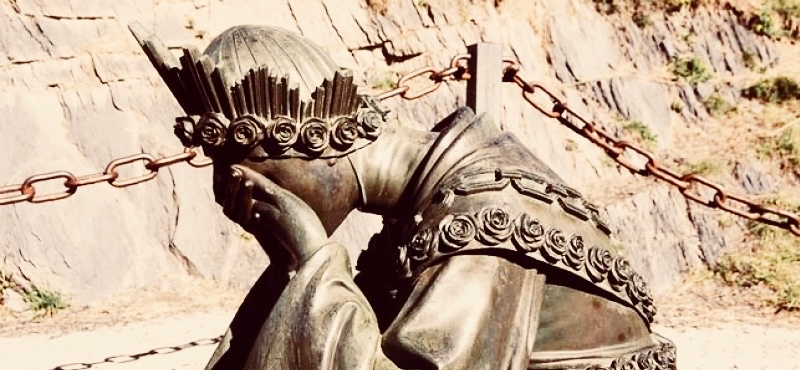
CJS.Org Introductory Remarks:
Here is the most recent part of this serialised in-depth account concerning the Apparition of Our Lady of La Salette, taken from the 1903 The Blessed Virgin in the Nineteenth Century: Apparitions, Revelations, Graces by Bernard St John. (See our first part here, for more about this).
Here are the four parts in this series so far:
- Part 1 The Apparition
- Part 2 Maximin Giraud meets the Curé d’Ars
- Part 3 The Secrets of La Salette
- Part 4 The Fate of Maximin Giraud
This extract and the upcoming ones tell of the final years of Maximin and Mélanie. We will also be returning to more in regards the Secrets of La Salette.
In this fourth part, however it is not a matter of the Secrets, but of continuing Maximin Giraud’s story until his death in 1875.
Yet in order to appreciate something of the latter days of Maximin and Mélanie, it is necessary to know a little of the history of France, as well as Italy, in those troubled times – as both Maximin and Mélanie found that Providence led them beyond France to Italy.

In Maximin’s case, he fought in a war there, as a Pontifical Zoave.
What is a Pontifical Zoave it might be asked?
A Pontifical Zoave was a soldier of the Pope – who was fighting to defend the Papal States ruled by the Pope at that time from being annexed by the movement for Italian unification.
Central to that movement was Garibaldi, who today is considered among the “Fathers of the Fatherland” of modern Italy.
In the Nineteenth Century, most Catholics had a very, very different view of Garibaldi!
Thus, Maximin joined the battle against him as a soldier and in the next section, we will hear Mélanie suggesting that Garibaldi was akin to the devil incarnate.
We cannot detail this Nineteenth Century war to protect the Papacy, but Charles A Coulombe has written a stirring book about the Pontifical Zoaves called The Pope’s Legion.
Indeed I have reviewed The Pope’s Legion at length here at this site and perhaps it is helpful if I quote from that review here:
In the 1860s Catholics still felt they were witnesses to the tragedy of the West. In the 1860s, all these things still mattered to them.
And this unusual and remarkable book by Charles A. Coulombe can do much to illumine why they mattered.
More specifically, Coulombe’s book is focussed on a military conflict in the Italian peninsula of the 1860’s.
There is no single unified Italian state at the time. What would become Italy has long been divided between a number of different territorial powers.
One of these was that of the Pope – monarch of the Papal states. As Coulombe explains:
“The Pope is the bishop of Rome, in succession from Saint Peter, chief of the apostles.
That is what Catholics believe, and from that simple – if eternally disputed – statement flows all else about the office.
Given that the Pope is head of a universal Church, his followers have always felt that, in order to exercise his spiritual power impartially it was necessary for him to be independent of any earthly power.”
And for a thousand years before the 1860s, it had been understood that there should be Papal States to safeguard independence.
The emperors and kings of Christendom had repeatedly come to their defense over the centuries.
However now there were those that want to unite all of Italy.
In effect, this meant declaring war on the Pope at the time (Bl. Pius IX) in order to forcibly annex the Papal States to an expanding Italian monarchy.
In the view of one section of the populace, it belongs to the “legitimate aspirations” of the Italian people to live in a modern Italian state, which is not subject to a medieval autocrat.
But what of the forgotten other section of the populace who cried out in despair and indeed horror?
It is a maxim that history is written by the victors. Most modern readers will have grown up steeped in that version of history.
And the viewpoint that most of us moderns naturally absorb – uncritically absorb like a sponge perhaps – is that of course, men like Garibaldi and his Italian nationalists and revolutionaries were right: of course, forcibly annexing the Papal States was perfectly legitimate …
Yes, how many of us moderns today regard the revolutions of recent centuries as a justified and inevitable part of history!
In reading this series on Mélanie, Maximin and La Salette, it would be well to remember that this was not the worldview of the visionaries of La Salette – and Maximin was willing to risk his life in defense of a worldview so very, very different to the ‘politically correct’ dogmas of our present time.
Again, more can be found about this very different worldview in my review of Coulombe’s book here.
Is there anymore to add?
Perhaps just this. We cannot of course, do full justice to the story of Mélanie and Maximin and La Salette in this series.
For that the reader must look elsewhere. The best book in English is Sister Mary of the Cross: Shepardess of La Salette by Father Paul Gouin, which we have reviewed here.
However, we still hope here and in the extracts that follow to cast a little helpful light on Mélanie, Maximin and the Weeping Virgin of La Salette. And now we turn to Bernard St. John – RB.
Bernard St John on the Last Years of Maximin Giraud
In tracing the history of the devotion, of which La Salette was the cradle, we have somewhat lost sight of those who were the cowherd children, Mélanie and Maximin.
On November 4th, 1874, a day bright and mild as in spring, and with sunshine bathing the Planeau of Sous les baisses, a solitary pilgrim made his way up the mountain.
It was Maximin Giraud. He was going to take a last look at the spots engraven in his mind, in connection with the Apparition.
The hand of death was upon him, though he was not to breathe his last until a few months later.
From a merely human point of view, his existence had been an unsatisfactory one from the time when the future Bishop of Orleans found him a restless, inquisitive lad, to the day when we see him toiling up the mountain, bent before his time, and with one foot in the grave. He had been a rolling stone that had gathered no moss.
Educated at the charge of Mgr. Bruillard, Bishop of Grenoble, he had studied for the priesthood, but without becoming a priest. He had been a medical student in Paris, but without becoming a doctor.
At times in the great capital, he had known what it was to want bread.
With all this, in his wanderings and vicissitudes, he had had the good fortune to meet with a worthy couple, who adopted him as their son.
In 1865, he had joined the Pontifical Zouaves.
In short, throughout his chequered career, opportunities and money had alike slipped through his fingers, leaving him poor, though neither mean nor ignoble.
On the contrary, it may be said that he remained ingenuous and open to noble impulses to the last.
The, humanly speaking, unsatisfactory side of his character has been made use of as an argument against the reality of the Apparition of La Salette.
We have seen this argument ably refuted by Mgr. Ginoulhiac, Bishop of Grenoble. Theology and experience refute it also.
Had the voyant turned out worthless, as well as reckless and unstable in human things, this in itself would not have militated against the value of his testimony as witness of the supernatural event at La Salette.
But Maximin, as facts prove, was far from being worthless, while the weaker side of his nature remained admirably relieved by his unswerving attitude in connection with the Apparition.
The Rev. Pere Berthier, who for years had been his spiritual director, says in his book, Les Merveilles dc Notre-Dame de la Salette: “Maximin was probably less deserving of blame than those who blamed him.”
So on this November 4th, 1874, and when approaching his fortieth year, we see him dragging himself wearily up the mountain, in order to look once more on the sacred spot by Mount Gargas.
The following morning he assisted at Mass there and communicated.

Afterwards he drank at the spring, in the dried-up bed of which, twenty-eight years before, he had seen the glorious Apparition seated in drooping attitude, with her face in her hands.
He then trod reverently the way of the Cross marked by fourteen elaborately carved stations, showing where the luminous Apparition had passed before ascending out of the children’s sight for ever.
By this time there was a religious community on the spot known as the nuns of La Salette.
Maximin was received and tended by these ladies, and afterwards asked by them to relate something concerning the Apparition.
He did so, first within their convent and afterwards outside in presence of pilgrims. Those who listened say that as he spoke his face was as that of one transfigured.
After taking a long last look at the hillock, whence, as a little lad of ten, he had seen the heavenly visitant ascend and then disappear as in a globe of light, he turned to go down the mountain.
Maximin lingered on until the following spring. When he saw his end was near, he sent for a priest, and piously received the last Sacraments.
He died on March 1st, in the arms of his mother of adoption, Mme. Jourdain, and leaving a written profession of faith, which began as follows: “I believe everything which the Holy Apostolic and Roman Church teaches.”
The profession continues: “I firmly believe, even at the price of my blood (meme au prix de mon sang), in the celebrated Apparition of the Holy Virgin, on the mountain of La Salette, September 19th, 1846, which Apparition I have defended by word of mouth, and by my pen, as well as by suffering.
Let no one after my death say that he has heard me retract anything of what I have said concerning the great event of La Salette, for in so saying he would lie to the world and to himself.”
Afternote:
It should be noted that the text above has been very, very minimally edited – mainly to break up long paragraphs for easier reading from a computer screen. Nothing of any substance whatsoever has been altered. Also to help navigate through this series, we offer:
- Part 1 The Apparition
- Part 2 Maximin Giraud meets the Curé d’Ars
- Part 3 The Secrets of La Salette
- Part 4 The Fate of Maximin Giraud
Foreword for Monarchy by Roger Buck

Buying Books at Amazon Through These Links Gives Us a Commission. This Supports Our Apostolate. Thank You if You Can Help Us Like This!

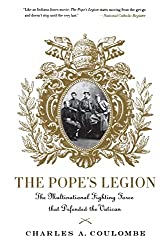



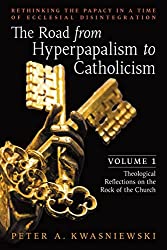
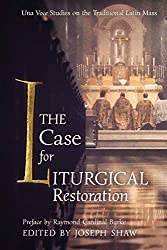



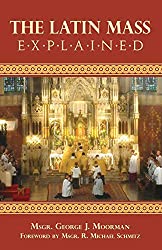
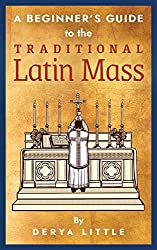
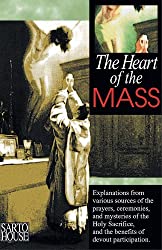




Comments
comments are currently closed
2 responses to “Mélanie Calvat and Our Lady of La Salette—Pt. 4 The Fate of Maximin Giraud”
[…] Part 4 The Fate of Maximin Giraud […]
[…] Part 4 The Fate of Maximin Giraud […]